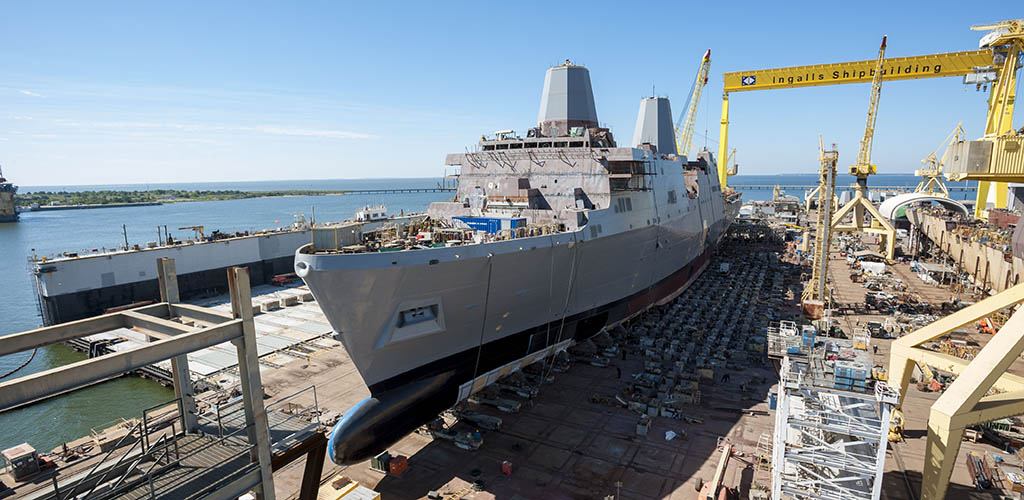
Certainly commonality is not the final and only answer to cost savings. Given the current national defense priorities and a request by the President of $583 billion for defense in Fiscal Year 2017, most would surmise that, if properly prioritized and managed, the budget would be sufficient to support the majority of defense requirements.
However, two areas where the department faces a significant shortfall are in the shipbuilding account and in the accounts that support the operation and maintenance of surface ships. The task of recapitalizing a limited number of complex naval assets with “30-plus” year lifespans does not lend itself to a simple flatline spending model; in fact, left unchecked, it tends toward dramatic peaks and valleys and associated budgeting woes. The Congressional Budget Office estimates that the cost of the Navy’s 2016 shipbuilding plan—an average of about $20 billion per year (adjusted for inflation) over 30 years—would be $4 billion higher than the funding that the Navy has received in recent decades. Similarly, were it not for the supplemental dollars, the operational and maintenance accounts, would be underfunded anywhere between 15 percent and 30 percent depending on the COCOM demand signal for assets.
With little wiggle room in shipbuilding and operations accounts to sustain required re-capitalization and maintain those ships, the Navy must minimize the cost of acquiring and supporting the fleet. A key enabler to ensuring total ownership affordability is commonality. At the NAVSEA sponsored Combat Systems Symposium in December of 2015, senior Navy leadership of the Naval Sea Systems Command stressed that to reduce both shipbuilding and lifecycle costs, common hulls and shipboard systems must be part of the equation.
One major program that is well positioned to demonstrate a commitment to “commonality” and the correlated cost savings is associated with the ongoing LPD-17 program. With the Navy’s decision to use the proven LPD-17 hull form for the LX(R) program, the Navy will undoubtedly save millions of dollars in designing, building, and maintaining LX(R) ships over their lifespan. With 11 LX(R) ships envisioned to replace 12 LSD 41/49 Class ships, the Navy has a window of opportunity to do for its fleet what the American auto industry achieved decades ago—build modified repeats of a proven chassis across a range of models, and integrate the latest electronics through standardized interfaces. This will allow for reduction in production costs through continuous learning and supply chain stability, while simultaneously permitting the latest electronic capabilities to be fielded.
The decision to build LX(R) as a modified repeat of the proven LPD-17 class was eminently wise from an operational perspective as well. Warships are expected to operate in a hostile environment, accomplish their mission, live to fight another day, and provide an inherent level of safety for their precious cargo, the men and women who operate and fight the ship. Desirable attributes such as agility, flexibility, survivability, lethality, adaptability, modularity, and maintainability are intrinsic to the LPDs being constructed today, and warfighters standing the watch on future LX(R) have every right to expect those same attributes.
From a total ownership cost perspective, maximizing commonality between LPD and LX(R) will also help minimize the cost of operating and maintaining the ships, allowing the fleet to leverage and reuse logistics support, training, spare parts, and schoolhouses. In a budget and acquisition process that is largely driven by the purchase price of a ship, it is often forgotten that operations and maintenance costs are the significantly greater than the purchase price of the ship, often comprising more than 75 percent of total ownership cost.
The Navy must make the right decisions regarding where commonality makes sense, but also resist the too-common practice of re-engineering mechanical and electrical attributes of a ship that are proven and that Navy sailors already know how to support and maintain. Time and time again, commonality has proven to be a powerful enabler in reducing the cost of purchasing and supporting surface warships. Look back at the Spruance, Kidd and Ticonderoga classes of ships as but one example of successfully evolving common hulls and propulsion systems for multiple purposes while achieving significant savings for the Navy in the process. Could we do it again with LPD-17? It’s worth a try.





